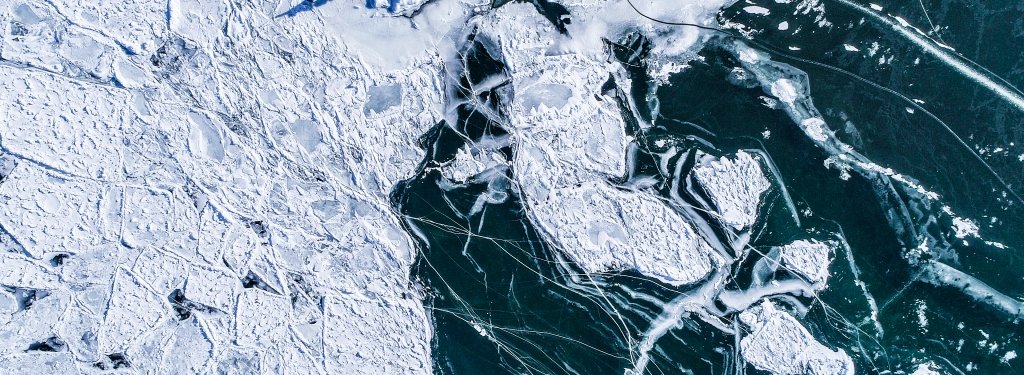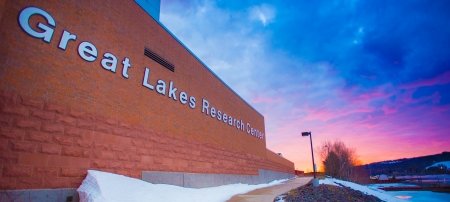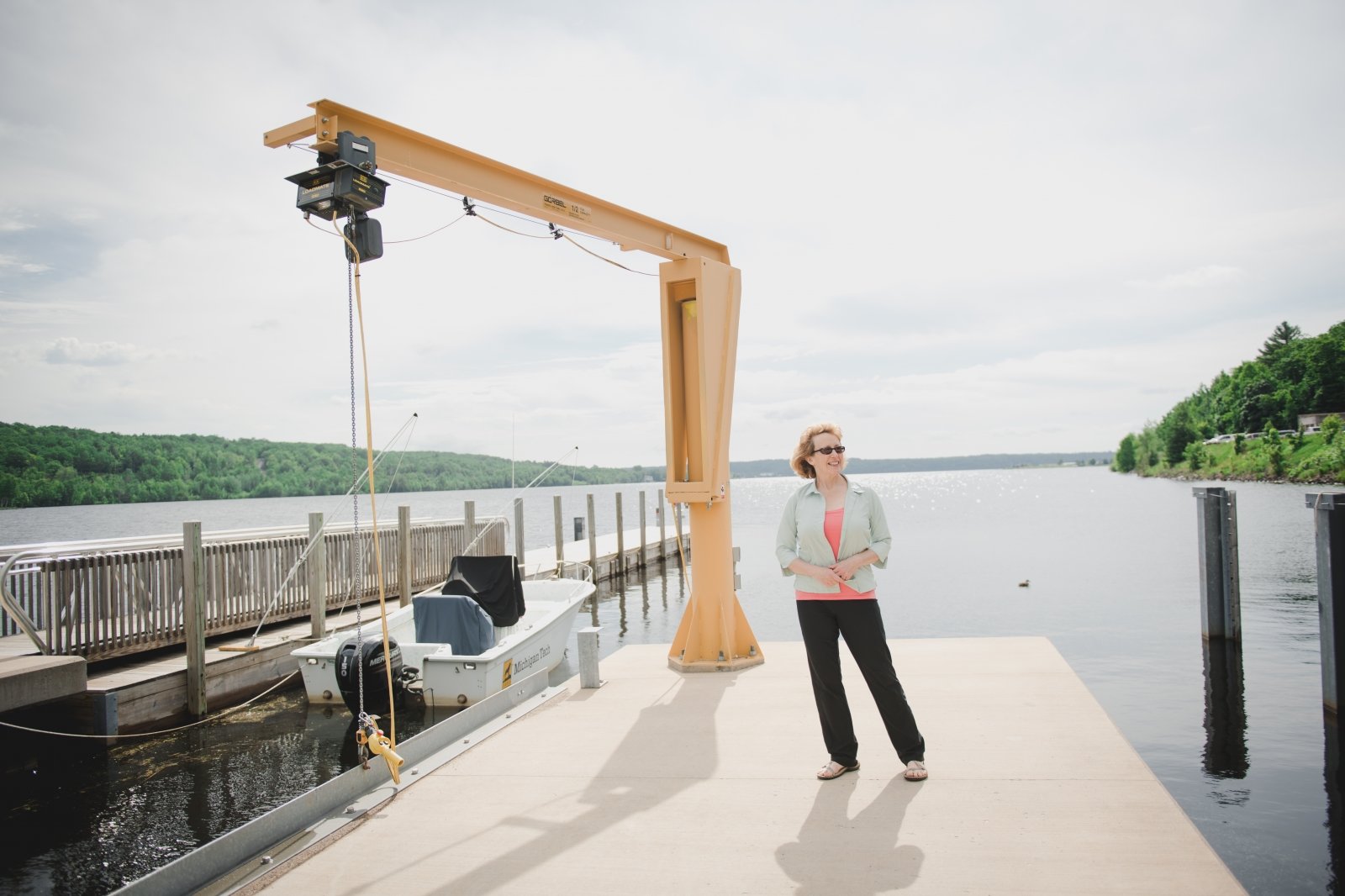A transdisciplinary team examined regulatory impacts on Great Lakes mercury, focusing on an Upper Peninsula tribal community with high fish consumption.
Mercury is a widespread environmental toxicant and pollutant that travels up the food chain onto people's dinner plates. Although a global issue, mercury regulations vary worldwide. Depending on where one lives in relation to mercury emissions, regional remediation makes minimal impacts for local fish consumption advisories. This is particularly true in a sensitive landscape like Michigan's Upper Peninsula, where nearly 80 percent of inland lakes are impaired.
For the Keweenaw Bay Indian Community (KBIC), the problem culminates in the question, when can we eat the fish? A simple answer is elusive, but a study led by Michigan Technological University did provide insights as to what must be done to make the fish safe to eat.
The KBIC's question helped guide biogeochemical modelers, environmental engineers and social scientists to bridge global-chemical transport models and the local impacts on the KBIC and Michigan's Upper Peninsula. The study was published this week in the Royal Society of Chemistry’s peer-reviewed journal Environmental Science: Processes & Impacts (DOI: 10.1039/c7em00547d), and the work is part of a National Science Foundation program looking at the dynamics of coupled natural and human systems.
Sensitive Communities
Mercury is an atmosphere-surface exchangeable pollutant (ASEP) along with polychlorinated biphenyl (PCB) compounds, polycyclic aromatic hydrocarbon (PAH) compounds and other persistent organic pollutants (POPs). ASEP molecules are invisible, tasteless world-hoppers that can travel great distances.
Eventually, they make their way to the Great Lakes where they move through the air, landscape, water and animals. Researchers can describe ASEP movement and impacts through policy, socioeconomic pressures, ecosystem services, stressors like climate change and land use as well as biogeochemical cycling. The study's lead researcher is Judith Perlinger, professor of environmental engineering at Michigan Tech. She says the project is an example of using state-of-the-art science to answer a community-relevant question.
"We're taking phenomena that act on a global scale and predicting what they will do," Perlinger says, adding that working with the KBIC is a key piece of the project. "Clearly the issue matters to them, so how can we make the science relevant to them?"
To do so, take a big team: Six institutions, 36 researchers and 11 partnering organizations. Perlinger‘s team uses GEOS-Chem, a global three-dimensional Eulerian chemical transport model. It has been widely used to better understand tropospheric chemistry and composition. For ASEPs, GEOS-Chem sorts through the emission sources, migration, exchange rates and resting places of the pollutants and is coupled with mass balance modeling to understand the aquatic dynamics of the system.
Sensitive Landscapes
In the Environmental Science: Processes & Impacts paper, Perlinger and her team focus on mercury and three different policy scenarios through 2050.
In the first, they analyzed aspirational targets where all mercury emissions from anthropogenic sources are eliminated; in the second, they examined a moderate reduction based on policy-in-action; and in the third, they assessed a minimal-regulation scenario with no policy action.
They found little would change within the lifetimes of the KBIC community. Noel Urban, professor of environmental engineering and a project researcher who focuses on the biogeochemistry of the pollutants, says the process would likely take generations to reach levels that the community considers safe.
"People assume that what is deposited in a forest is also deposited the same in a lake, which isn't true, so models have been miscalculating," Urban says, adding that the feedback between land and aquatic systems also takes longer than researchers previously thought. "This is apparent in the Great Lakes, and the Upper Peninsula is a particularly sensitive landscape to mercury."
In terms of tracking mercury, Urban takes fish mercury concentration data from lakes and estimates mercury in fish from similar water bodies along with the Great Lakes Indian Fish and Wildlife Commission (GLIFWC)—one of the project's research partner organizations. They found that mercury persists differently depending on the size of the lake.
"Which poison do you want?" Urban asks. "Go to the big lakes and get PCBs, go to the small lakes and get mercury."
Simply put, there is no simple answer to the KBIC's question.
To further clarify the answer, Urban, Perlinger and their team plan to continue sampling in local Upper Peninsula lakes, assessing the regional impacts in the Great Lakes and vetting their findings through global models. Their transdisciplinary work deepens the understanding of mercury cycling and the accuracy of modeling, evaluates multi-scale policy, and offers insight into the best practices for engaging local indigenous communities in global research.
Environmental Science: Processes & Impacts publishes high quality papers in all areas of the environmental chemical sciences, including chemistry of the air, water, soil and sediment. We welcome studies on the environmental fate and effects of anthropogenic and naturally occurring contaminants, both chemical and microbiological, as well as related natural element cycling processes.
The Royal Society of Chemistry is the world’s leading chemistry community, advancing excellence in the chemical sciences. With over 50,000 members and a knowledge business that spans the globe, we are the UK’s professional body for chemical scientists; a not-for-profit organization with 175 years of history and an international vision for the future. We promote, support and celebrate chemistry. We work to shape the future of the chemical sciences – for the benefit of science and humanity.
Michigan Technological University is an R1 public research university founded in 1885 in Houghton, and is home to nearly 7,500 students from more than 60 countries around the world. Consistently ranked among the best universities in the country for return on investment, Michigan's flagship technological university offers more than 185 undergraduate and graduate degree programs in science and technology, engineering, computing, forestry, business, health professions, humanities, mathematics, social sciences, and the arts. The rural campus is situated just miles from Lake Superior in Michigan's Upper Peninsula, offering year-round opportunities for outdoor adventure.






Comments